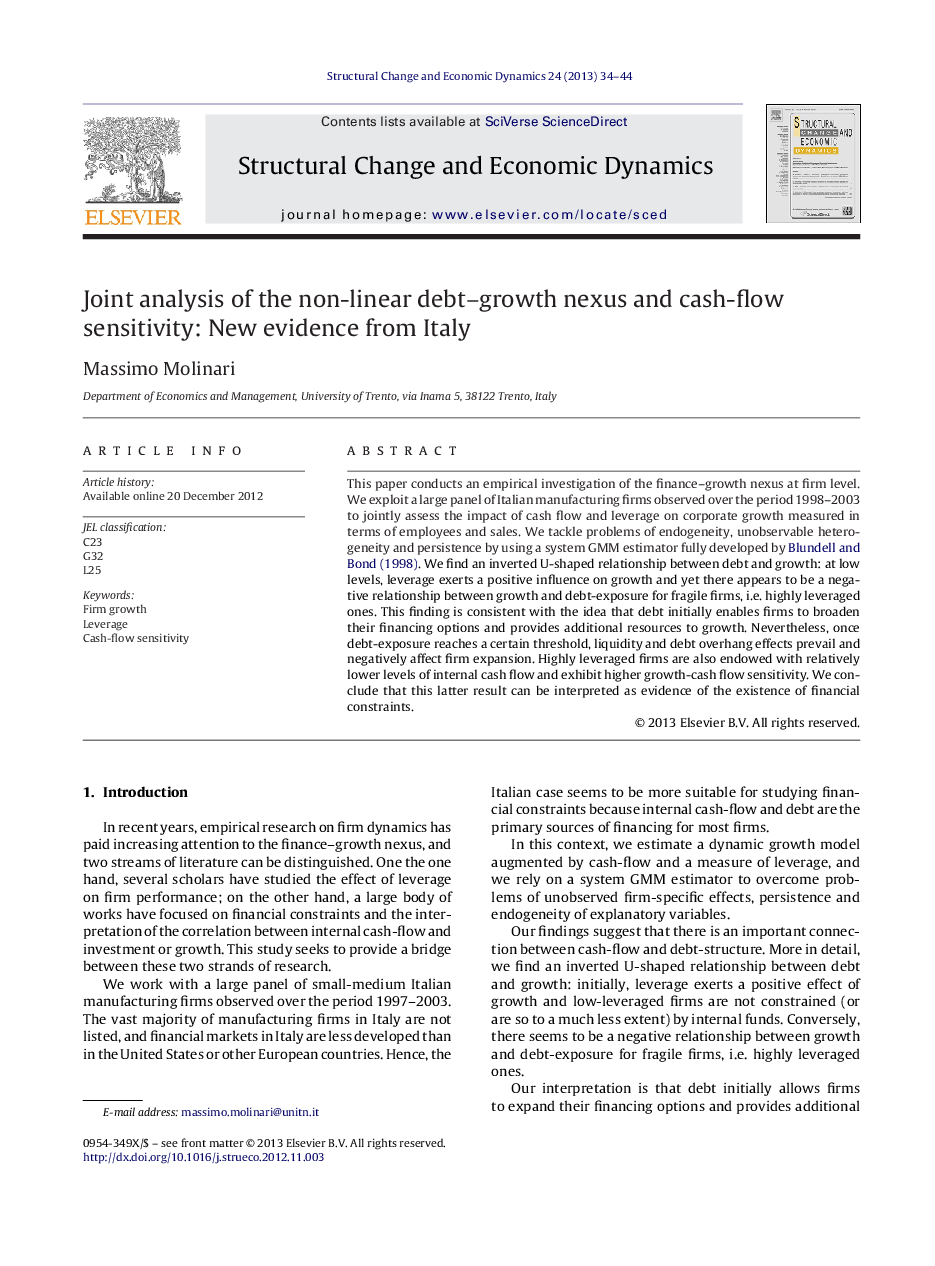| Article ID | Journal | Published Year | Pages | File Type |
|---|---|---|---|---|
| 988598 | Structural Change and Economic Dynamics | 2013 | 11 Pages |
This paper conducts an empirical investigation of the finance–growth nexus at firm level. We exploit a large panel of Italian manufacturing firms observed over the period 1998–2003 to jointly assess the impact of cash flow and leverage on corporate growth measured in terms of employees and sales. We tackle problems of endogeneity, unobservable heterogeneity and persistence by using a system GMM estimator fully developed by Blundell and Bond (1998). We find an inverted U-shaped relationship between debt and growth: at low levels, leverage exerts a positive influence on growth and yet there appears to be a negative relationship between growth and debt-exposure for fragile firms, i.e. highly leveraged ones. This finding is consistent with the idea that debt initially enables firms to broaden their financing options and provides additional resources to growth. Nevertheless, once debt-exposure reaches a certain threshold, liquidity and debt overhang effects prevail and negatively affect firm expansion. Highly leveraged firms are also endowed with relatively lower levels of internal cash flow and exhibit higher growth-cash flow sensitivity. We conclude that this latter result can be interpreted as evidence of the existence of financial constraints.
► We exploit a large panel of Italian manufacturing firms over the period 1998–2003. ► We estimate a dynamic growth model augmented with cash flow and leverage a system GMM. ► We find an inverted U-shaped relationship between debt and growth. ► Highly leveraged firms exhibit lower level of cash-flow and their growth is more sensitive to it. ► This is taken as evidence of the existence of financial constraints.
